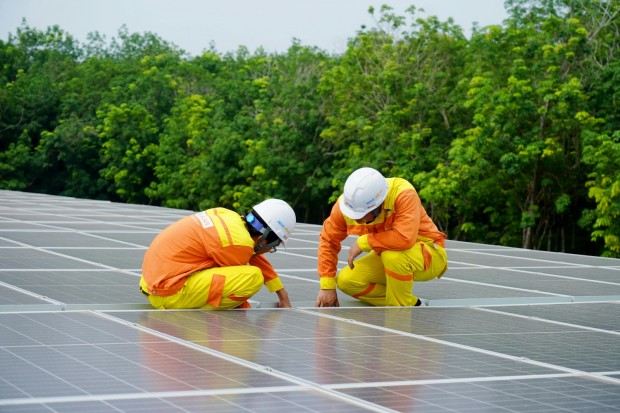In response to their commitment to achieving climate neutrality, Pope Francis has ordered the construction of an Agrivoltaic plant. As an illustration of the Pope's commitment to sustainable development, this innovative facility will integrate solar energy production with agricultural activities.

(Photo : Pexels/Trinh Trần )
Agrivoltaic Plant Construction
In an official letter published on Wednesday, Jun 26, Pope Francis, an environmentalist by nature, ordered the construction of an agrivoltaic plant in Santa Maria di Galeria, a territorial piece of Vatican land north of Rome. As mentioned, panels are typically erected over fields of crops or pasture areas in agrivoltaic projects, which combine the production of solar energy with agricultural endeavours. In his statement, Pope Francis expressed his intention to contribute to the efforts being made by all states to provide, in line with their distinct duties and abilities, an effective solution to the problems that climate change poses to mankind and our shared planet.
Moreover, Cardinal Fernando Véregez Alzaga, LC, who serves as the President of the Governorate of Vatican City State, and Archbishop Giordano Piccinotti, SDB, the President of the Administration of the Patrimony of the Apostolic See, have been tasked with the responsibility of constructing the renewable energy facilities. In accordance with an agreement that was reached in 1951 between the Holy See and the Italian State, the transmission facilities for Vatican Radio are housed on a 424-hectare site that is situated on the outskirts of Rome. Providing for the energy requirements of Vatican Radio and making a contribution to the overall energy maintenance of Vatican City State are the goals of the new plant.
Additionally, the two bishops have been appointed as 'Extraordinary Commissioners' by the Holy Father through the 'motu proprio.' They are granted full authority to oversee the project to its conclusion and maintain contact with the Italian government to comply with the Lateran Treaty regarding the site's construction.
Also Read: Iconic Belford Shoumate-Designed Boat House Hits Palm Beach Market for $24.95 Million
Climate Neutrality Goals of the Vatican
The Vatican officially became a party to the UNFCCC and the Paris Climate Agreement in 2022. By increasing its use of renewable energy sources, working toward a goal of zero emissions by the year 2050, and creating a fleet of cars with net-zero emissions by the year 2030, the Vatican has strived to significantly lessen its influence on the environment.
The pope stated that he intended to support the collective endeavors of all states to reduce greenhouse gas emissions by requesting that the Vatican join the framework convention, which requires countries to commit to limiting the release of these gases into the atmosphere. Based on their duties and capabilities, this is reportedly an appropriate response to the difficulties that climate change poses to humanity and the environment that we all share.
On the other hand, when it comes to reaching climate neutrality, the Vatican's Governor is also committed to doing things like making responsible utilization of natural resources, executing projects that aim to increase energy efficiency, and maintaining technological assets that are up to date. To achieve this goal, they will reportedly establish clear plans for future forestry efforts, diversify and source cleaner or alternative energy supplies for transportation, and improve waste disposal systems.
Nevertheless, investing in technological facilities that make use of renewable energy sources will be required in order to accomplish the goal of achieving neutrality, which also has a primary objective to promote the use of electric and hybrid modes of transportation.
Related Article: 7 Key Benefits of Solar Lights in Eco-Friendly Construction







